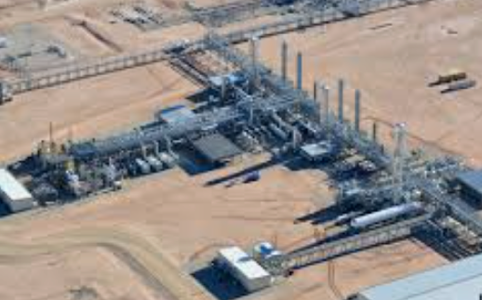The Texas oil and gas industry operates under a vast network of regulations, one of which is air quality permitting managed by the Texas Commission on Environmental Quality (TCEQ). The air permits ensure that facilities within this sector operate responsibly and within the environmental standards required to protect public health and the environment. Recently, we analyzed a dataset of air permits issued by TCEQ, and the findings reveal insightful patterns about the ongoing infrastructure development in the energy sector, particularly in the western regions of Texas.

Oil & Gas Data Download – West Texas Gas Plants
Key Findings from the TCEQ Air Permits Dataset
- A Diversity of Oil and Gas Facilities
The dataset comprised various facility types, including gas plants and treating facilities. These facilities play a crucial role in the processing and handling of natural gas and other hydrocarbons extracted from the prolific Permian Basin. While there was some consistency in the types of operations, most of the facilities were unique, each operating in different counties and locations across West Texas. - Midland and Beyond: Key Regions for Permits
One of the standout observations was the concentration of permits in Region 07 – Midland. This region, home to the heart of the Permian Basin, is bustling with activity as companies continue to expand their oil and gas infrastructure. Along with Midland, regions such as REGION 06 – EL PASO and REGION 08 – SAN ANGELO also appeared, but in fewer numbers, showing that oil and gas activity spreads across multiple basins in Texas. - Permits by the Numbers: Standard vs. Streamlined
When it comes to permit types, the majority fell under the category of “Standard Permits” (STDPMT), which are typical for complex facilities that must meet rigorous environmental and safety standards. However, a significant number of permits were classified as “Permit by Rule” (PBR), a more streamlined permitting process for smaller facilities or those with less environmental impact. The prevalence of both types highlights the diversity in the scale and complexity of operations within the sector. - Strong Focus on Gas Processing
A significant portion of the facilities in the dataset were gas plants, treating plants, or related infrastructure. This aligns with the broader trend of natural gas gaining importance within the energy mix, particularly as it plays a pivotal role in the global transition toward cleaner energy sources. Gas plants are essential for processing raw gas from oil fields, removing impurities, and preparing it for distribution to end users.
Account Name Insights
In reviewing the Account Name column from the dataset, several notable trends emerged:
- Energy Transfer was the most frequently occurring name, appearing multiple times across different facilities and regions. This reflects the company’s extensive presence in Texas and their large infrastructure footprint, particularly in the Permian Basin.
- Other account names, such as Brazos Midstream and Crestwood Equity Partners, also appeared in the dataset. These midstream companies are involved in key activities such as gathering, processing, and transporting oil and gas, which are essential for maintaining the flow of resources from the field to the market.
- Alkane Midstream and Canes Midstream were also listed, showcasing a diverse range of midstream operators active in the region, each contributing to the broader energy ecosystem in Texas.
The variety in account names underscores the competitive and dynamic nature of the oil and gas industry, with both large and smaller companies playing critical roles in the infrastructure that supports energy production.
The Bigger Picture: Permitting and Environmental Responsibility
The oil and gas industry in Texas, while economically vital, operates under tight scrutiny, especially when it comes to air quality and environmental responsibility. Air permits ensure that these facilities comply with state and federal air quality standards, helping to minimize the environmental impact of operations such as flaring, gas processing, and emissions management.
The dataset analyzed provides a glimpse into the ongoing efforts by companies to adhere to these regulations while expanding their infrastructure. It also reflects the regional focus of operations, with Midland standing out as a critical hub for oil and gas activity in Texas.
Final Thoughts
Texas remains at the forefront of energy production, and the TCEQ air permits dataset offers a valuable look at the regulatory landscape governing this sector. Whether it’s the diversity of facility types, the regional concentration of permits, or the different permit classifications, this data helps us understand the scope and scale of ongoing oil and gas development across the state.
As the energy industry continues to evolve, balancing economic growth with environmental stewardship will remain a priority. TCEQ’s air permits are just one part of the broader framework ensuring that the future of energy in Texas is sustainable and responsible.
Interested in learning more about oil and gas infrastructure in Texas? Stay tuned for updates on the latest trends, regulatory developments, and industry insights.












